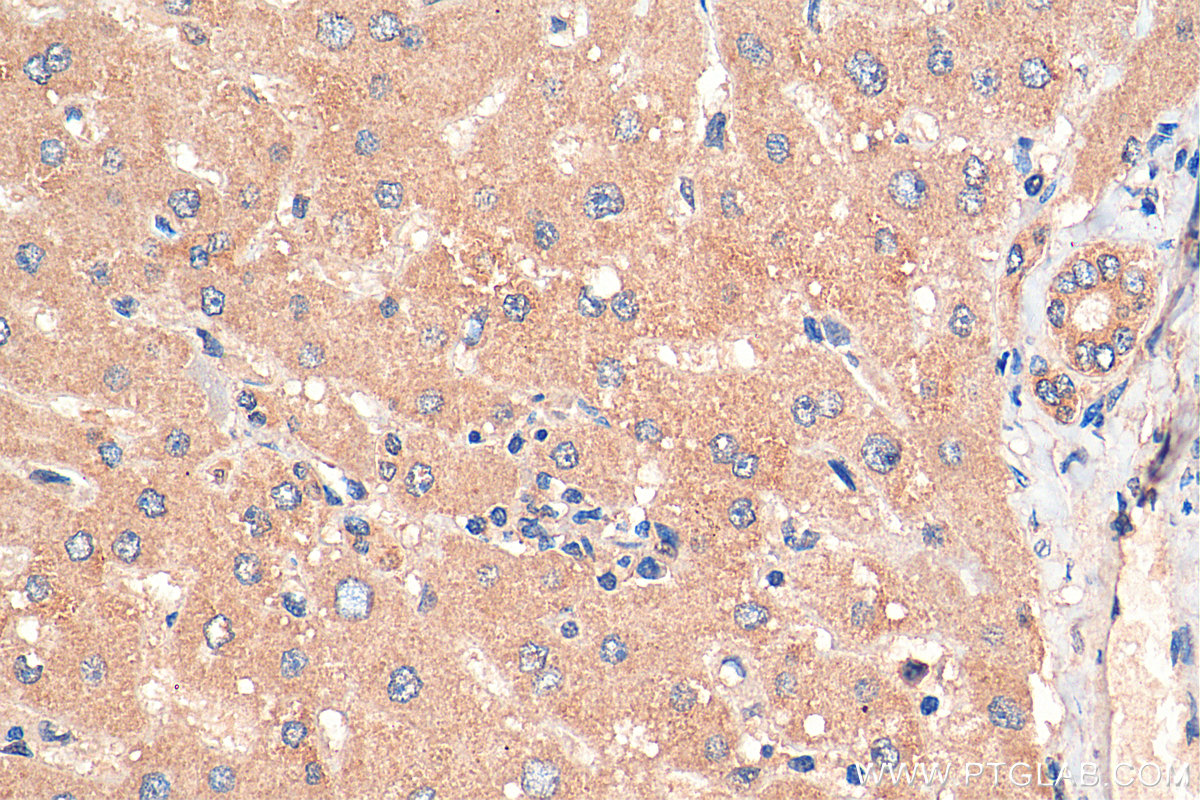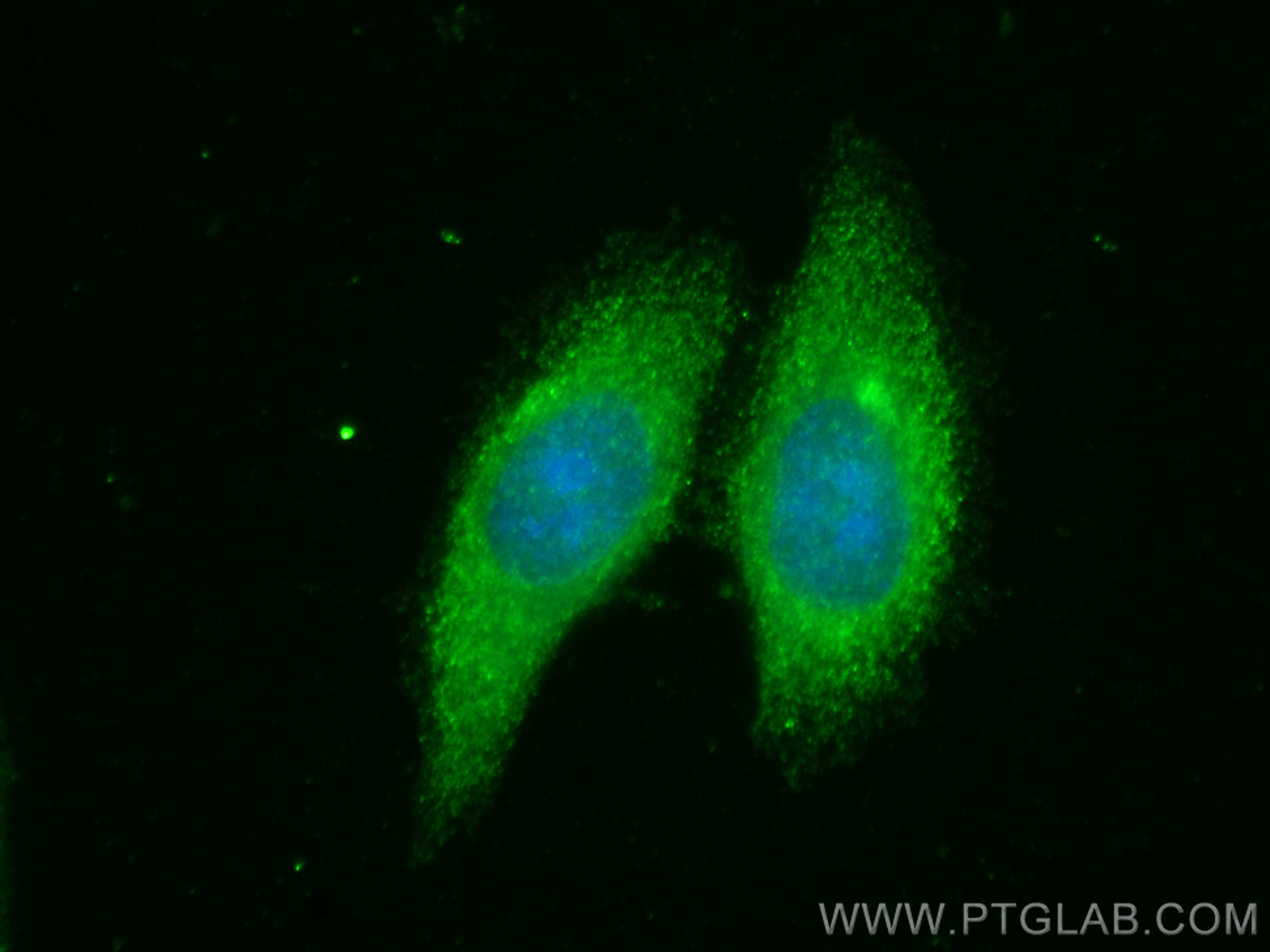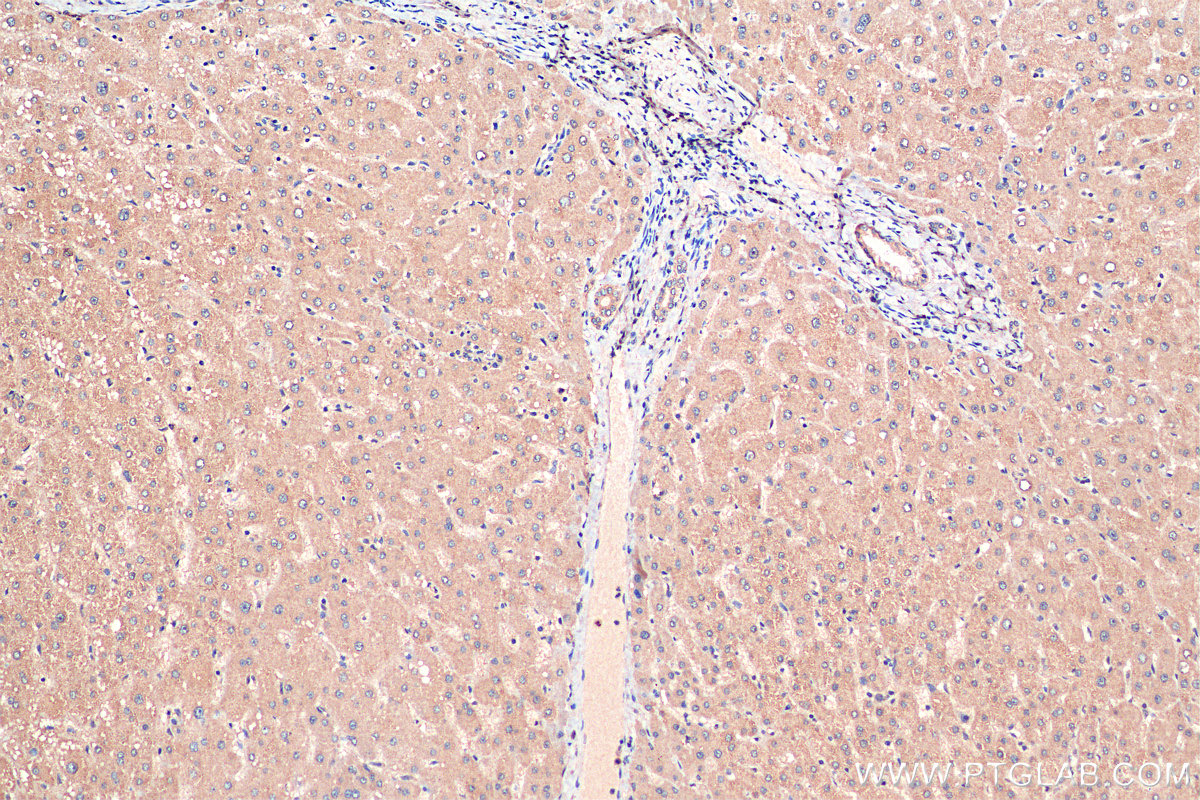验证数据展示
经过测试的应用
| Positive IHC detected in | human liver tissue Note: suggested antigen retrieval with TE buffer pH 9.0; (*) Alternatively, antigen retrieval may be performed with citrate buffer pH 6.0 |
| Positive IF/ICC detected in | HepG2 cells |
推荐稀释比
| 应用 | 推荐稀释比 |
|---|---|
| Immunohistochemistry (IHC) | IHC : 1:50-1:500 |
| Immunofluorescence (IF)/ICC | IF/ICC : 1:50-1:500 |
| It is recommended that this reagent should be titrated in each testing system to obtain optimal results. | |
| Sample-dependent, Check data in validation data gallery. | |
产品信息
26084-1-AP targets RNF217 in IHC, IF/ICC, ELISA applications and shows reactivity with human samples.
| 经测试应用 | IHC, IF/ICC, ELISA Application Description |
| 经测试反应性 | human |
| 免疫原 | RNF217 fusion protein Ag22022 种属同源性预测 |
| 宿主/亚型 | Rabbit / IgG |
| 抗体类别 | Polyclonal |
| 产品类型 | Antibody |
| 全称 | ring finger protein 217 |
| 别名 | C6orf172, IBRDC1, ring finger protein 217, RNF217 |
| 计算分子量 | 275 aa, 32 kDa |
| 观测分子量 | 59, 32 kDa |
| GenBank蛋白编号 | BC026087 |
| 基因名称 | RNF217 |
| Gene ID (NCBI) | 154214 |
| RRID | AB_3085839 |
| 偶联类型 | Unconjugated |
| 形式 | Liquid |
| 纯化方式 | Antigen affinity purification |
| UNIPROT ID | Q8TC41 |
| 储存缓冲液 | PBS with 0.02% sodium azide and 50% glycerol , pH 7.3 |
| 储存条件 | Store at -20°C. Stable for one year after shipment. Aliquoting is unnecessary for -20oC storage. |
背景介绍
E3 ubiquitin-protein ligase RNF217, also known as IBR domain-containing protein 1 (IBRDC1), as a transmembrane (TM) domain-containing RBR-type E3 ubiquitin-protein ligase, belongs to a highly conserved member of the RING finger family. RNF217 mediates the degradation of the iron exporter ferroportin/SLC40A1 and thus regulates iron homeostasis(Uniprot, PMID: 33895792).
实验方案
| Product Specific Protocols | |
|---|---|
| IHC protocol for RNF217 antibody 26084-1-AP | Download protocol |
| IF protocol for RNF217 antibody 26084-1-AP | Download protocol |
| Standard Protocols | |
|---|---|
| Click here to view our Standard Protocols |


